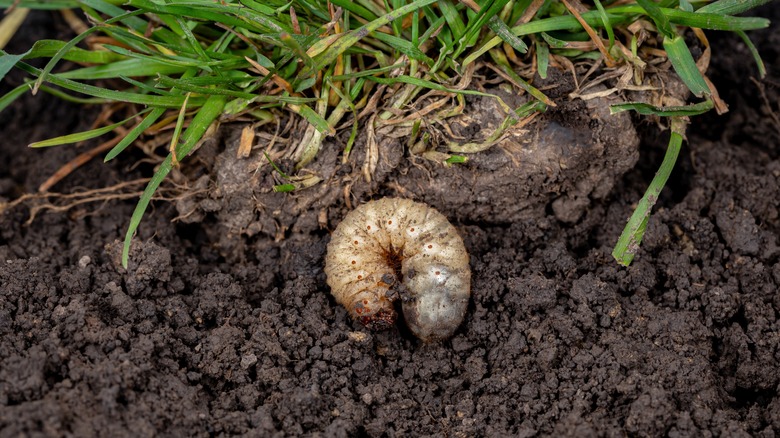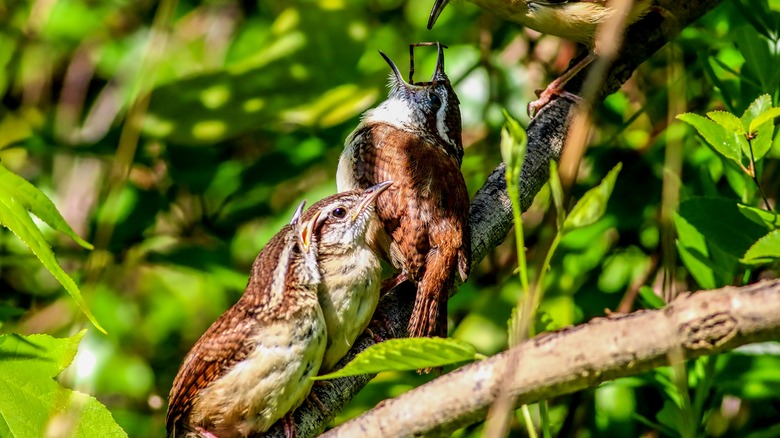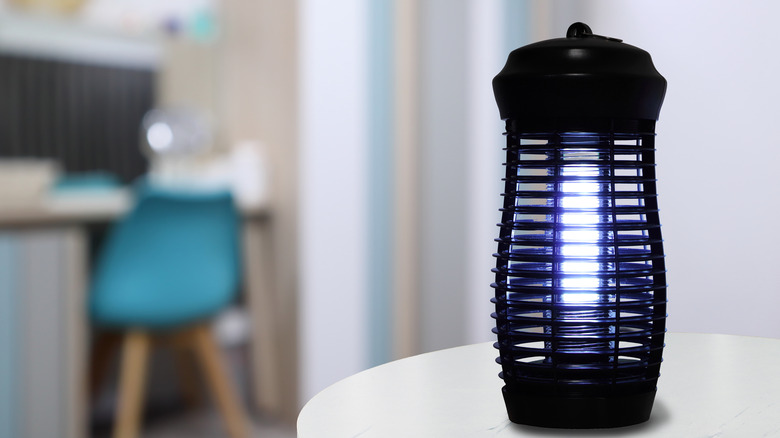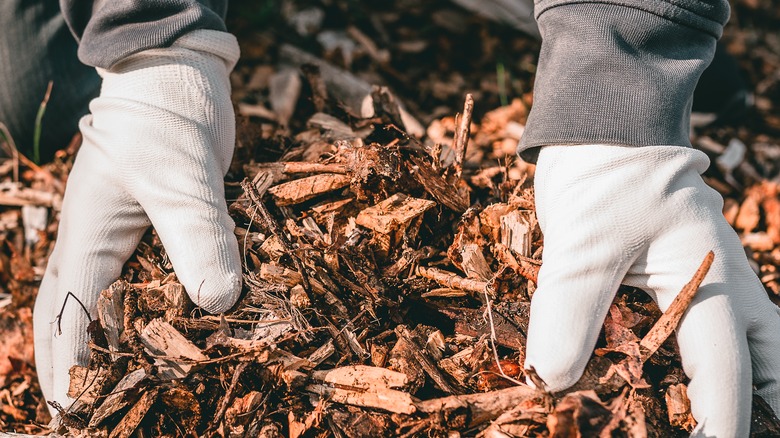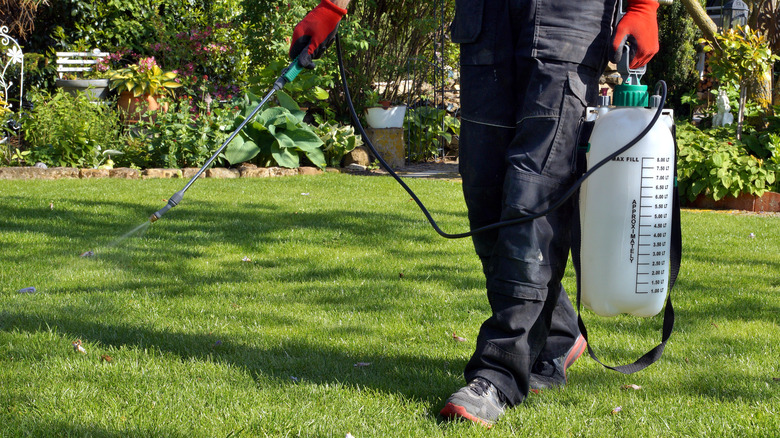Integrated Pest Management: What Is It And How To Use It In Your Garden
When spring rolls around, many homeowners grow weary looking for the most effective ways to mitigate the increase in pest infestation. Whether it be the multiplying kitchen fruit flies or the hungry rabbits in the garden, it can be overwhelming with the arrival of warm weather to manage these homeownership responsibilities. But ultimately, this is a problem that needs to be addressed from several different angles. Yes, we're talking about Integrated Pest Management (IPM) — a comprehensive approach to pest control that seeks to manage pests with a more long-term mindset that does not affect human well-being and minimally disrupts the natural order.
As pest management is a problem that nearly two out of every three homeowners face, taking this integrated approach will be tremendously beneficial in helping you create a well-rounded and sustainable approach that will address your needs. The five main facets of IPM include biological, cultural, technical, physical, and chemical controls. So with that, let's dive into each one and discuss how all of these components work together.
Biological controls
Biological controls utilize the efforts of parasites, diseases, and the good ol' animal kingdom to help manage pest populations. Depending on your location and household needs, this might involve seeking out a biological control already found in nature or something more invasive. Integrating predators like birds by providing them with shelter and access to convenient nutrition can be effective when trying to get rid of pests such as lady beetles, green lacewings, rove beetles, and other nuisances (as noted in a study by Clemson).
These are slightly more extensive installations but can be worthwhile. Small bugs like ladybugs are great examples of biological controls effective against aphids. Other forms of biological controls include organisms like viruses, bacteria, and fungi. These can cause infection in some of our unwanted visitors and operate as more of a natural deterrent for certain pests. Biological controls are a particularly effective solution when the area is sensitive to chemical controls that could disrupt the natural ecosystem.
Cultural controls
Cultural controls are another critical detail of integrated pest management. Cultural controls revolve around changing environmental factors in order to discourage pest infestations. These types of controls were among the most popular forms of pest control for a long time but gradually were replaced by the prominence of chemical controls (as noted by Science Direct). But in the last several years, with researchers and the general public gaining a better understanding of the negative effects of chemical controls, cultural controls have continued to explode in popularity.
Some practices surrounding cultural controls include seasonal crop rotation and sanitation management. Seasonal crop rotation is effective in that it prevents the long-term growth of pests and reduces their numbers. Sanitation management, including practices like weed pulling and fruit removal, is effective in that it cuts off nutrition for various pests. In many instances, sanitation management of crops like apples and lemons can serve the additional purpose of offering you and your household homegrown food to enjoy that is organic and fresh.
Mechanical controls
The third type of control found in IPM is mechanical controls. This involves using cutting-edge, relatively non-invasive technology to help manage pest behavior. One of the main examples of mechanical control is a pheromone trap. Pheromone traps are excellent tools for helping attract a specific pest into a designated area with the use of a chemical solution. Critters such as Japanese beetles and gypsy moths are excellent examples of pests where pheromone traps can be particularly effective.
Another example of a mechanical control would be an ultraviolet light trap. Beetles, flies, and even some types of cockroaches are drawn to this kind of light. While it may require a slightly higher electric bill, this kind of trap will keep these kinds of pests away from social areas, gardens, and other key parts of the backyard. Ultimately, these controls can be worthwhile investments for homeowners, but it is important to note they may often require slightly more advanced installation or localized ecosystem knowledge to maximize their efficacy.
Physical controls
Next, consider physical controls. Simply put, physical controls involve constructed pieces or more extensive traps to mitigate pest infestations and optimize yield. Something as simple as a fence can be considered a physical control. But when it comes to managing a garden, there are actually a variety of physical controls you can implement. For example, one of the most popular physical controls is mulch. But many have never stopped to actually think about the practical purpose of mulch. Mulch does help to improve the quality of soil, but it is also a physical control against weed growth.
In a garden growing food that wishes to avoid chemical exposure, a physical control like a garden net can be incredibly helpful. These will prevent vermin, birds, and other larger animals from getting into your crops. Aside from being more eco-friendly, physical controls can also be budget-friendly with relatively low installation costs and last multiple seasons of the year without needing replacement. Thus, physical controls should absolutely be a pillar in your pest management when creating your plan.
Chemical controls
Lastly, chemical controls are the fifth and final piece of integrated pest management. Although the other parts do offer more eco-friendly and healthier alternatives to chemical controls, let's discuss the pros. For one, chemical controls have an immediate, targeted, and powerful effect on whatever pest management needs to be taken care of. Pesticides like ryanoids cause almost instant paralysis and death.
And while their quick approach and availability can be quite attractive options, especially in mass-scale agriculture, people often overlook the natural options in the realm of chemical controls. For example, did you know that tea tree oil can act as a natural fungicide that does not do any damage to your crop? The Modern Farmer points out some of the cancerous effects of inorganic pesticides and notes that there are effective and much safer alternatives that homeowners overlook too often. Items as simple as neem oil and hand detergent spray can be wildly effective against pests without endangering any people or ants in the process.
